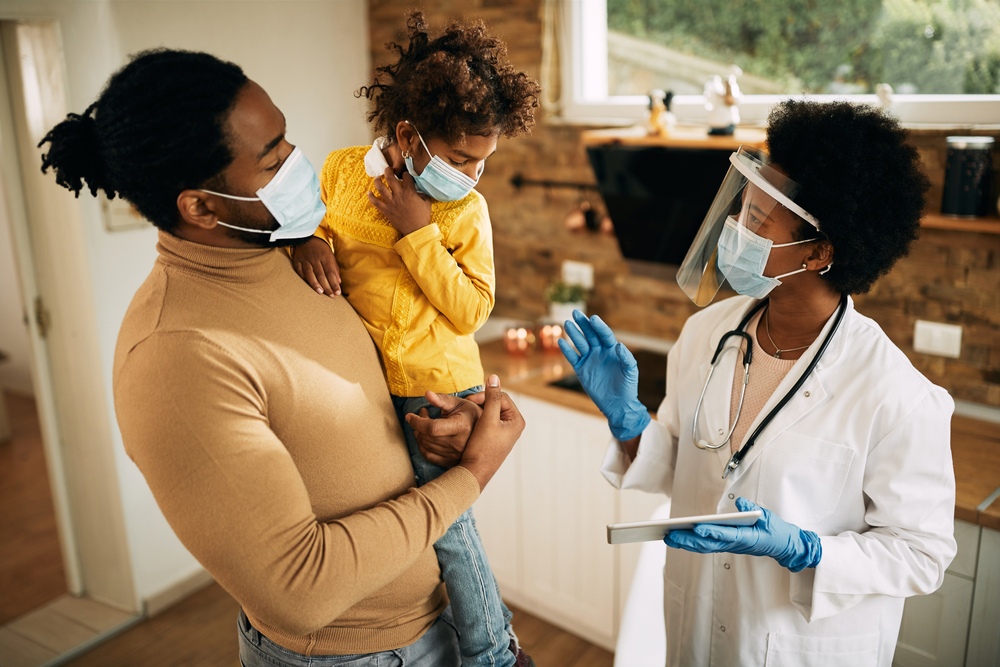The Chicago Department of Public Health (CDPH) released The State of Health for Blacks in Chicago, a first of its kind data brief describing the health status of Chicago’s Black population and the root cause inequities disproportionately affecting the lives of Black Chicagoans. The brief provides an in-depth look at the top drivers of the life expectancy gap between Black Chicagoans and non-Black Chicagoans, which is 9.2 years and rising. That gap widens even further when comparing specific neighborhoods – for example, it jumps to 14.6 years between predominately white Edison Park (83.1 years) and majority Black West Garfield Park (68.5 years).
“This week of Juneteenth, The State of Health for Blacks in Chicago is a stark reminder of the legacy of unacceptable inequities that continue to plague our city and country to this day,” said Mayor Lori E. Lightfoot. “This brief is also a call to action for our city and one we take very seriously and are acting upon.”
The brief is the result of the work of a group of five Black women from CDPH who formed the Health Equity Index Committee (HEIC). The working group applied their diverse skills and expertise—including data analysis, community engagement, and research—to present a unique perspective on how to define, measure, analyze and discuss health and health equity for Black Chicagoans.
The CDPH Health Equity Index Committee (HEIC) is Blair Aikens, Dana Harper, Rachelle Paul-Brutus, Donna Scrutchins and Yaa Simpson.
HEIC members write in the brief that it is designed to “address the historical and present forms of racism, systematic exclusion, and sources of toxic stress that prevent Black Chicagoans from achieving health equity.”
“Members and allies of the Black community … must join forces to address and eliminate these critical health inequities and their underlying causes. Only then, will the color of the person’s skin no longer determine how long they live or their quality of life,” the committee wrote.
Black Chicagoans, on average, live 71.4 years, while non-Black Chicagoans live 80.6 years, on average. The brief describes in words and graphs how this racial life expectancy gap in Chicago, which has been increasing in recent years, is driven by five main factors:
- Chronic Diseases
Diabetes-related death rate among Blacks is 70% higher than among non-Blacks
- Homicide
Homicide rate among Blacks is 9 times higher than the homicide rate among non-Blacks
- Infant Mortality
Black infants are almost 3 times as likely to die in their first year of life compared to non-Blacks
- HIV, flu and other infections (COVID-19)
Blacks accounted for half of the people living with HIV.
- Opioid overdose
Opioid-related overdose death rate among Blacks is more than 3 times the rate among non-Blacks
When this brief refers to Blacks in Chicago, the category encompasses Non-Hispanic (NH) Blacks, African-Americans, and African descendants, which are not a monolithic group. However, this method recognizes that people from all of these cultures and places experience racism based solely on the color of their skin.
The brief also analyzes housing inequality and income levels, measures economic hardship by race, and looks at other factors such as rates of smoking and obesity, and access to healthy foods. It also notes how Chicago is one of the most racially segregated cities in the United States. In 2019 there were 768,524 Blacks living in Chicago, and the great majority (80%) live in just 23 of the 77 community areas of the city.
“The city did not become segregated by accident. Long histories of political and economic exclusion have led to the geographic isolation of Blacks from other racial groups in the city,” the brief found. “This includes inequitable local government policies, practices such as red lining, contract sales, real estate covenants, and finally, racialized violence and intimidation.”
“I commend this team from CDPH for taking on this project and elevating this issue,” said CDPH Commissioner Allison Arwady, M.D. “COVID-19 brought to the surface these inequities in our city and our society but they’ve always been there, and they’ve always been a focus of the work we do at CDPH. We’re re-doubling our efforts to address these inequities.”
In 2020, CDPH launched Healthy Chicago 2025, a citywide plan to reduce the racial life expectancy gap with strategies that tackle the root causes of health. The department also recently hired its first Chief Racial Equity Officer and uses its Healthy Chicago Survey and Chicago Health Atlas to better connect with Chicagoans and make data more accessible to them.
In response to the COVID-19 outbreak and the disproportionate impact it was having on communities of color, the City created the Racial Equity Rapid Response Team (RERRT) and made a concerted effort throughout the pandemic to direct resources to the most impacted communities, using its COVID Community Vulnerability Index (CCVI) to assess areas most in need.
This work will be furthered with the announcement this spring that CDPH is allocating $9.6 million in COVID-19 relief funding from the Centers for Disease Control and Prevention (CDC) to establish Healthy Chicago Equity Zones – six geographic areas covering the entire city that will be led by regional and community organizations. Relying on participatory, data-informed processes, these organizations will create community-based stakeholder coalitions to develop targeted strategies to improve community and individual wellness.




